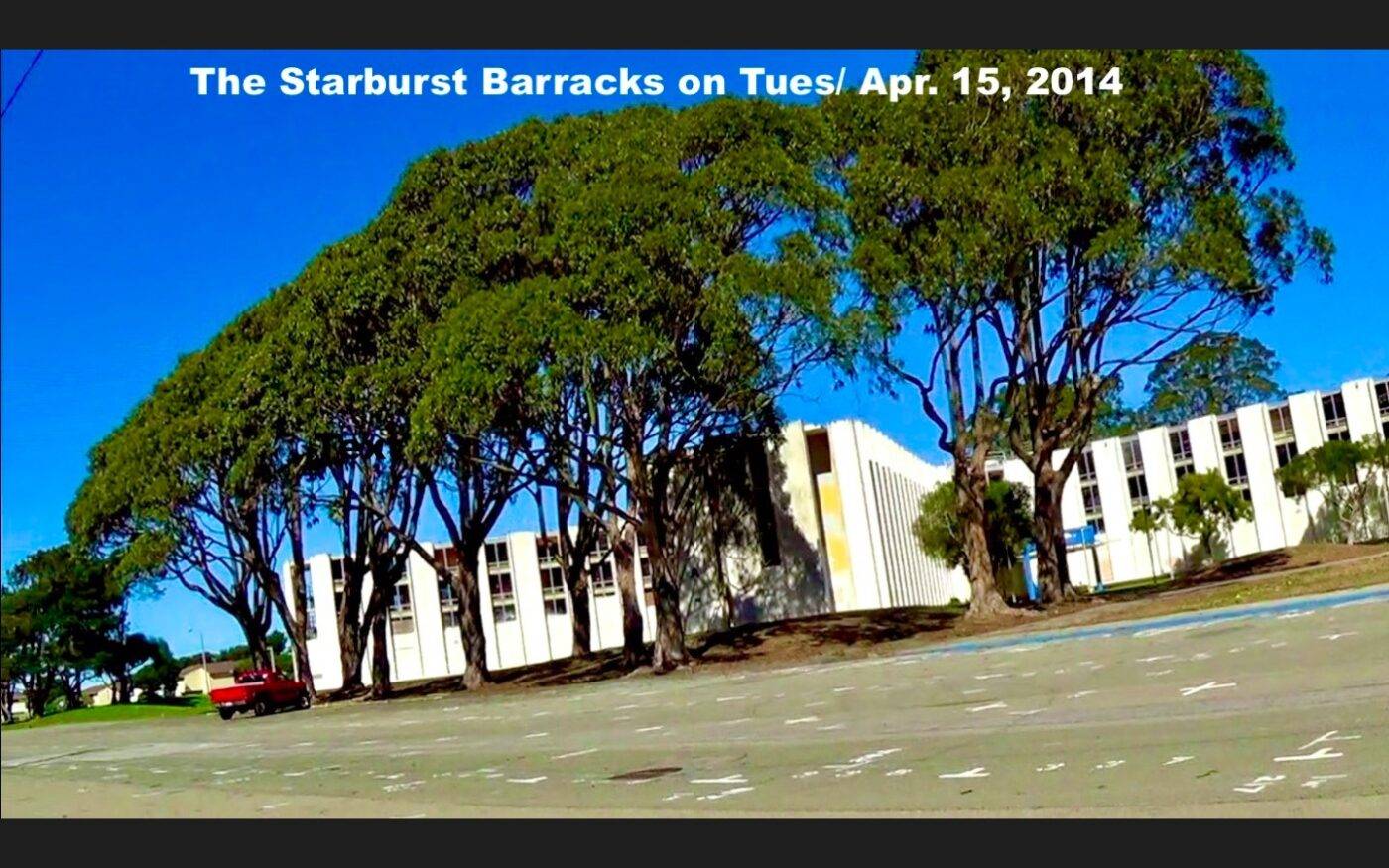
by Carol Harvey
Treasure Island Redevelopment Agency (TIDA) agenda: Use poor and people of color to redevelop Treasure Island
Deadly agenda
I began investigating Treasure Island and Yerba Buena Island in 2014 after an invitation by resident Kathryn Lundgren. Based on what she showed me, the Treasure Island Development Authority (TIDA) had apparently developed a long term agenda to use the rents of poor and low income residents, mostly people of color, first to keep dilapidated Navy townhouses from falling down and then to redevelop the island.
All the while, they were exposing unsuspecting tenants to deadly radiation. When TIDA was ready to redevelop the islands, they would get rid of as many poor folks as they could to make way for wealthy prospective buyers of the condos and townhomes they would build. TIDA’s actions in the 10 years between 2014 and 2024 have proved this speculation true.
TIDA bestowed legal status on this plan through the Disposition and Development Agreement (DDA). This agreement established a cutoff date. Tenants who signed leases before July 14, 2011, became “Legacy Households.” They would be allowed to stay. Those who signed after that date must go.
I once asked Treasure Island director Bob Beck about the rationale for this apparently arbitrary DDA dividing line. He told me it was a safeguard to keep people from weaseling their way onto this great and fabulous adventure that Treasure Island would become.
The current situation
On redeveloped Treasure Island in July 2024, the population is much reduced. According to TIDA, four buildings on Halibut Court are being torn down. Residents in Gateview Avenue townhouses have stated that people around them are being evicted without any indication the townhouses they occupy will be razed, and they too will be forced to go. TIDA states that eventually all former Navy housing will be demolished.
However, neither the Navy nor TIDA have provided a timeline or date. Not knowing their eviction date, it’s hard on these residents. They won’t know how much time they will have to find other housing in the high-rent Bay Area.

Meanwhile, a population of very low income residents are moving into affordable units in four new buildings — Maceo May at 55 Bruton St., Starview Court at 78 Johnson St. and a residential tower, Isle House, at 1 Bruton St. TIDA will soon fill up a fourth facility, IC4.3, located across California Avenue (now Tradewinds Avenue) from Building 2. Unfortunately, these four buildings, all visible across the Bay from San Francisco, will have been constructed on the radioactive footprint of former Naval Station Treasure Island’s Starburst Barracks.
Maceo May facility for veterans and Starview Court affordable housing appear to have been built to prove to the public that TIDA is not kicking out all the poor folks. But considering the quality of the new residences with plumbing that has leaked human waste, over-expensive parking lots, untrained maintenance workers, unresponsive management staff and small rooms, it becomes clear that these deficient accommodations will push even more people out.
How did it happen that Maceo May, Starview Court, Isle House and the IC4.3 site stand on radioactive ground?
Starview Court was named after two barracks the Navy built in 1969 that occupied a long strip of property immediately inland from the former Great Lawn. These barracks were visible across the Bay from San Francisco. Each barracks had six wings. From above, they resembled asterisks or Starbursts – thus, the name Starburst Barracks. They were demolished in 2016 to make way for redevelopment.
Starting in 2014, I videoed the Starburst Barracks many times. I imagined sailors in the morning exiting Cosson Hall’s double doors. It must have been beautiful as they strolled under the trees through shadows and shafts of sun. By 2016, the trees were gone leaving the buildings sadly vulnerable.
I was on the island when they tore the barracks down. Uncontained asbestos and mold flew everywhere. Nearby residents complained they got sick from the toxins blowing around in the high wind. I became nauseous standing at the Avenue B bus stop across Ninth Street from the uncovered demolition site.
How did the Starburst Barracks become radioactive?
Years ago, in July 1956, on the island’s southwestern shore, the Navy constructed a full size mockup of a landlocked ship called the USS Pandemonium One. Working on this structure, sailors prepared for nuclear war in a training program by learning to use cesium-137 and other radioisotopes to detect and clean up radiation. Crews flushed these toxins off the ship’s deck into the soil. The area later became a garbage dump where the Navy burned trash filled with toxic chemicals and radioactive objects. In 1965, the Navy constructed a string of townhouses there so even today, people live on polluted ground
During the 1940s and ’50s, the Navy constructed an earlier barracks on the Great Lawn. Each night sailors tracked radiation on their shoes and clothes from their Pandemonium One training site back to these barracks. Then, the Navy tore the old barracks down and built the Starburst Barracks just inland from the Great Lawn.
In 1969, they moved Pandemonium One to the northeastern side of the island, renaming it Pandemonium Two. Sailors continued to wash radioactive materials into the soil and groundwater near Northpoint Drive and the wastewater treatment plant. This time, sailors returned to the Starburst Barracks from their day’s work at Pandemonium Two, dragging radiation back across the island on their clothes and shoes.
To my knowledge, no Navy official ever mentioned testing the barracks footprint or the Great Lawn for radiation.
As you can see from the video footage at the top of this article, on Friday, July 1, 2016, I walked west down the Avenue of the Palms, turned left onto Ninth Street and left again onto Avenue B, where I stood at the Avenue B bus stop shooting footage of the western end of the barracks. I did this for a sailor who had contacted me saying he’d been assigned to the barracks in 1969. He was angry about his adenocarcinoma, lymphoma, colon cancer and a son born with birth defects. He attributed these serious health problems to the time he lived in the radioactive Starburst Barracks.
He wrote, “I was assigned to the southernmost of the two Starburst Barracks, top floor, second from the end with a view of Alcatraz, the Golden Gate, and parts of San Francisco. Until February of 2016, I thought it was heaven. I now realize I was stationed in what is quite possibly radioactive hell.”
My video of the dilapidated barracks was intended to take him back to the scene of the crime. I showed him his wing. “There’s your window,” I said.
“They have confirmed that there is radiation under the building. You were living close to other toxins as well. The area across Ninth Street in what is now a dog park was monitored for dioxins and benzene. The Navy has come clean about the fact that there was also cesium-137 in this ground.”
Now, jump ahead to Saturday, April 13, 2024. With my camera, I and a Treasure Island resident crossed the island in her car on a toxic tour (see the accompanying video). At one point, we sat in the Mersea Restaurant parking lot looking across Ninth Street at the Treasure Island community.
Back in 2014, when I first videoed the island, I soon learned that Ninth Street was the major artery separating the Navy’s administrative side of the island on the east toward the San Francisco Bay Bridge from this community of townhouses the Navy built for sailors and their families on the southwestern shore facing Alcatraz, Angel Island and the Golden Gate Bridge.
On this leg of our toxic tour, we were facing the Ninth Street dog park and the townhouses. All the dwellings stand on soil saturated with dangerous levels of radiation, weapons grade chemicals and heavy metals that the Navy left during the 60 years it conducted schools to teach sailors how to deploy violently poisonous weapons. Due to the invisibility of the toxins they live around, it’s easy for the residents to deny their presence.
For 30 years, the Navy has been cleaning poisons that are impossible to completely remove. When the Navy finally razes the townhouses, the released toxins will imperil everyone on the island, rich or poor.
In order to redevelop Treasure Island and sell expensive condominiums, TIDA is covering the soil with a dirt cap and buildings. Eventually time and ocean rise will break down these massive layers of dirt and expose the deadly contaminants to animals and humans.
Isle House residential tower vs affordable Starview Court
Continuing our tour, we circled behind where we had been sitting, passing the Mersea Restaurant entrance to face a long strip of ground that was once the Great Lawn and is now an enormous construction zone. Bristol condominiums loomed in the distance on Yerba Buena Island above us.
To our left was Starview Court. To our right was Isle House.
Starview Court and Isle House sit near each other in the same neighborhood, but the communities they house will be very different.
Isle House is the first market rate residential tower on former Naval Station Treasure Island. designers describe it as “a 250-unit, 22-story high rise with a central courtyard on the lower level.” Isle House will include “250 homes, studio apartments, 1, 2, and 3-bedroom units, a cafe, live-work units, a fitness center, roof deck with grilling and seating, skyline views, and lounge areas for remote working and relaxation.”
By contrast, Starview Court at 78 Johnson St. is a low-rise seven-story, 138-unit residence housing a multicultural population – Black, Indigenous, Hispanic, Asian, seniors, people with disabilities and low income workers.

Starview Court is the second affordable building constructed for Treasure Island redevelopment after Maceo May veterans housing. The structure is targeted to current residents of Treasure Island, households subsidized by Catholic Charities as well as market rate tenants managed by John Stewart’s The Villages.
The building is constructed around an enclosed courtyard. Amenities include a community room with a shared kitchen, fitness room, bicycle parking only and terraces with San Francisco views. It offers no parking spaces for cars, which allow residents to drive on and off the island to hospitals, their kids’ schools or for groceries. Parking lot spaces cost a whopping $150 a month.
Islanders tell me they consider this affordable housing a step down. They can’t walk out of their apartments or let their dogs out into a front yard with grass as they could when they lived in the Navy’s townhouses. They don’t have their own parking space.

They can no longer launder their clothes in their own washers and dryers. They are forced to share a laundry room.
Because the new units are small, they are encouraged to hold yard sales to sell their furniture and belongings before they move.
Prospective tenants are left in the dark on crucial information. They were told they would be given similar units but are charged more for reduced space. An islander said she planned to request less square footage because she wasn’t sure if she would have to pay the same, or more, rent.
During a spring 2024 tour of Starview Court, people were shown units different from those they will occupy. One person was taken through a large unit she could not afford with three bedrooms, a hallway closet and a master bedroom with attached bath.
Another sent me a video of their tour, pointing out deficient planning of the space. The bedrooms were small with half bathrooms that were huge. “They make more room for a half-bath than they do anything else.”

Their king-sized bed wouldn’t fit in the bedroom. A tiny heater high on the wall was apparently meant to keep a whole apartment warm. The windows were too small. To accommodate one person’s respiratory disability, windows had to be large enough for an air conditioner, but they weren’t.
Another person taking a tour verified there was no living room in the unit they inspected. “Where are you going to put the dining room table?” they asked.
On radioactive ground
Continuing on our toxic tour, we drove back out of the Mersea Restaurant parking lot toward the dog park and the community beyond, where radiation lurks under every one of the townhouses.
New residences – Starview Court, Maceo May, Isle House and the IC4.3 building site – also stand on toxic ground.
We turned right onto Ninth Street. As we passed the Avenue B bus stop heading toward Avenue H and the Oakland-Berkeley side of the island, I said to my companion, “Later, I might tell you about the radiation, if you ever want to know.”
She didn’t.
Carol Harvey is a San Francisco political journalist specializing in human rights and civil rights. She can be reached at carolharvey1111@gmail.com.





